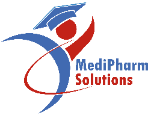A day in the life of a pharmacovigilance (PV) professional can vary depending on the type of company they work for (pharmaceutical, biotech, regulatory body, etc.) and their specific role, but there are common tasks and responsibilities that most PV professionals share. Here's a glimpse into a typical day:
1. Reviewing and Managing Adverse Event Reports
A significant part of a pharmacovigilance professional’s role involves reviewing adverse event (AE) reports from patients, healthcare providers, or clinical trials. These reports might come from various sources—clinical trials, post-market surveillance, or spontaneous reporting systems. They need to evaluate the data, check for completeness, assess whether the report is serious (e.g., life-threatening, requires hospitalization), and ensure it is coded correctly for further analysis.
- Example Task: "Review a report of a patient experiencing an allergic reaction after using a new drug. Check the medical history, treatment details, and symptoms described. Make sure it's documented according to the latest medical coding standards."
2. Case Assessment and Follow-Up
Pharmacovigilance professionals often need to follow up on adverse event cases to gather additional information. This may involve contacting the reporter, healthcare providers, or even the patient (if the privacy regulations allow) to get more details about the event. If the event is serious or requires more information for causality assessment, follow-up actions are crucial.
- Example Task: "Follow up with a healthcare provider to get additional details about a reported adverse event, such as lab test results or medical history, to help assess the relationship between the drug and the event."
3. Signal Detection and Risk Management
On a broader level, PV professionals help in signal detection, which involves identifying potential patterns or trends in adverse event data. They analyze cases to see if there are any emerging safety concerns. This process could involve statistical analysis and collaborating with the clinical safety team to determine whether a signal could lead to regulatory action or require label changes.
- Example Task: "Run a signal detection analysis using a database of adverse event reports to identify if a specific drug is being linked to a higher-than-expected number of cardiovascular events."
4. Preparation of Regulatory Reports
PV professionals are also responsible for preparing regulatory documents, such as Periodic Safety Update Reports (PSURs), which are submitted to health authorities. These reports summarize all safety data collected over a specific time period and assess the overall benefit-risk profile of a drug.
- Example Task: "Work on preparing a PSUR for a drug, summarizing adverse event data and safety findings over the last six months, and ensuring that the report complies with local regulatory requirements."
5. Collaboration with Cross-Functional Teams
Pharmacovigilance professionals often work closely with other departments like medical affairs, clinical development, regulatory affairs, and quality assurance. They might discuss safety issues, participate in clinical trial safety reviews, or provide advice on how to handle safety concerns in marketing or sales materials.
- Example Task: "Join a cross-functional team meeting to discuss a potential risk associated with a drug that's in late-phase development. Discuss the findings and help devise strategies to mitigate the risk."
6. Staying Updated on Regulations and Guidance
Pharmacovigilance professionals need to stay current with evolving regulations, safety guidelines, and pharmacovigilance practices from various health authorities like the FDA, EMA, and WHO. They may need to review new safety standards and ensure the company’s practices are compliant.
- Example Task: "Review the latest guidance from the European Medicines Agency (EMA) regarding the submission of adverse event data and ensure the company’s processes align with the new requirements."
7. Training and Development
Many PV professionals also engage in training. This could include conducting internal training for new hires or providing ongoing education to colleagues about safety reporting or regulatory changes.
- Example Task: "Develop a training module for the sales team to ensure they understand how to report any adverse events they might encounter during their interactions with healthcare providers."
8. Emergency or Time-Sensitive Situations
Occasionally, PV professionals are called upon to deal with urgent safety issues. For instance, if a drug is found to be linked to a serious, widespread adverse effect, a quick response might be necessary to ensure patient safety, which could involve issuing safety alerts or recalling the drug.
- Example Task: "Investigate a potential safety issue where multiple serious adverse events have been reported for a newly approved drug and help prepare a safety communication to health professionals."
Work Environment and Challenges
- Work Environment: Many PV professionals work in office settings, but remote work is increasingly common, especially in roles involving data analysis and reporting. The job requires attention to detail, regulatory knowledge, and the ability to analyze and synthesize large amounts of data.
- Challenges: Pharmacovigilance can be demanding, especially when dealing with serious adverse events or potential product recalls. There’s also the pressure of staying compliant with ever-changing regulations and balancing multiple tasks, such as case management, reporting, and risk assessments.
Overall, working in pharmacovigilance is a mix of scientific analysis, regulatory knowledge, and patient safety advocacy. It offers an impactful way to ensure the safety of medicines in the real world, although it can be stressful at times due to the need for quick decision-making and thorough evaluation of risks.
To learn more from related topics, please visit our website or newsletter at https://medipharmsolutions.com/newsletter/


No Comments